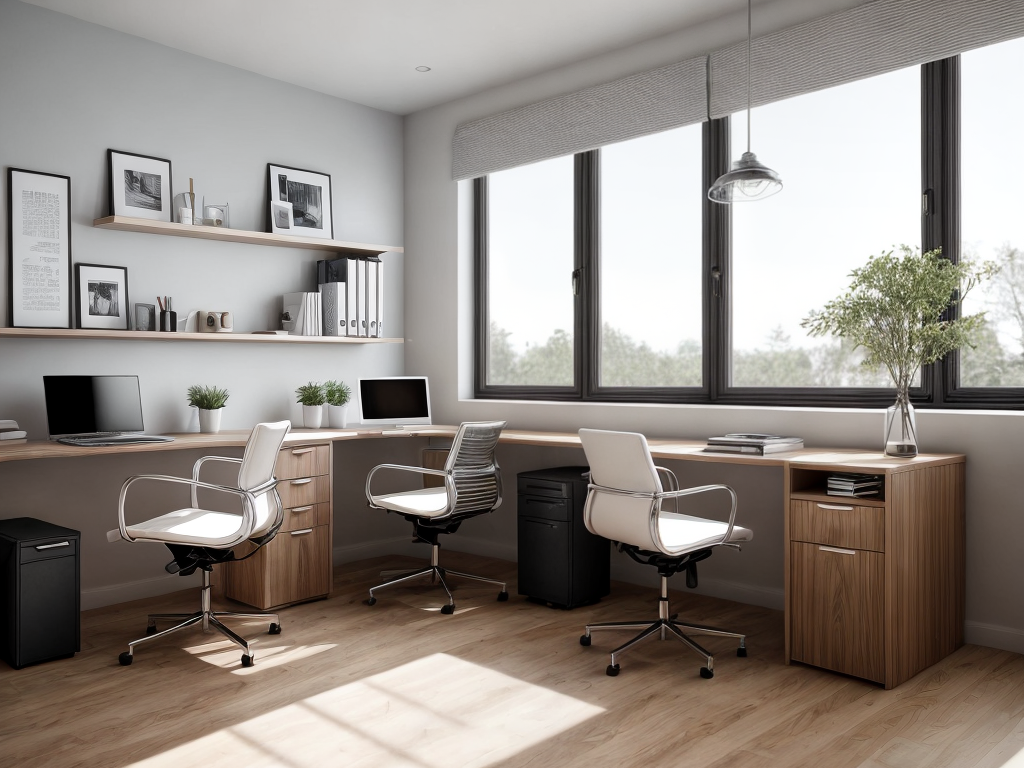
Strengthening Communities, One Public Area at a Time
As a construction company, we’re pretty good at building things – houses, office buildings, you name it. But there’s one thing that brings me even more satisfaction than erecting structures: creating shared spaces that bring people together. Don’t get me wrong, I love crafting beautiful homes just as much as the next contractor. But there’s something special about public areas that foster community interaction and connectedness. Let me tell you, when I see families gathered at the park we built or neighbors shooting the breeze on the plaza we constructed, it fills me with immense pride knowing our work transcends mere bricks and mortar.
You might be wondering, “Why is some construction guy getting all sappy about benches and gazebos?” Fair question. The truth is, spaces that encourage spontaneous meetups and casual conversations are the mortar holding communities together in an increasingly fragmented world. With all the digital distractions and time spent cooped up indoors these days, we need countervailing forces that quite literally bring folks out into the open. Parks, plazas, pavilions – these are the great equalizers, the democratic spaces accessible to all regardless of age, background, or bank account balance.
So let’s take a look at how shared public spaces have the power to strengthen neighborhoods and improve our overall sense of community, shall we? I’ve got personal stories aplenty, but I’ll try to rein in the wholesome, feel-good anecdotes for the sake of objectivity (no promises though – this is one of my favorite topics!).
The Park: Nature’s Community Center
Parks are like the community centers of the great outdoors. They provide a natural setting for everything from pickup sports games and picnics to quiet strolls and some good ol’ people-watching. Parks offer something for everyone, which is why I always make a point to incorporate ample green spaces when working on neighborhood development projects.
One example that really sticks out in my mind is Willow Glen Park in San Jose. Our firm was tasked with revamping the area, and I knew we had to create a space that catered to the diverse surrounding community. So we divided it into different zones – there’s the sports area with baseball diamonds and basketball courts, the playground for kids to let loose, shaded walkways for morning jogs, and plenty of open lawn for relaxing or tossing around a frisbee.
What I love most is how the park has become a hub of intergenerational mingling that you just don’t see as often these days. On any given sunny afternoon, you’ll find seniors playing chess at the picnic tables while youngsters frolic at the splash pad. Teenagers working on their curveballs as retired couples stroll the paved paths. It’s a beautiful representation of the community in microcosm – all ages, backgrounds, and walks of life sharing this communal space.
Simply having easy access to green spaces has been shown to improve physical and mental health, but the personal interactions parks facilitate are arguably even more vital. They’re the great equalizers that remind us we’re all part of the same neighborhood tribe despite our superficial differences. Feeling that sense of community belonging? That’s priceless.
Plazas: The Urban Livingroom
While parks are key for residential areas, plazas serve a similar community-building function in denser urban environments. These pedestrian-friendly public squares provide an outdoor “living room” of sorts for city dwellers to unwind, socialize, and take a breather from the concrete jungle.
One of my favorite local examples is Cesar Chavez Plaza in downtown San Jose. Originally a fertile gathering place for the area’s Mexican community, it had fallen into disrepair over the decades. So we spearheaded a major revitalization effort in the late 2000s, reconstructing the iconic gandolas (fountains), adding vibrant murals and shade structures, plus opening it up to vendors and performers.
Now it’s utterly transformed into a lively social hub where people from all walks of life converge. You’ll find businesspeople having outdoor lunch meetings, buskers and street artists showcasing their talents, and multi-generational families coming together over elote or aguas frescas from the food trucks circling the perimeter. The best part? Everyone feels equally welcome, like it’s their plaza.
Having this type of dynamic shared space is so crucial for urban areas that can otherwise feel like a continuous sea of steel, glass, and asphalt. Plazas become the neighborhood’s backyard of sorts – a place for chance encounters, Spontaneous conversations, and simple moments of respite from the rush of city life.
And you better believe we proudly advertise our role in rehabilitating the plaza with prominent signage! Hey, a construction firm has gotta toot its own horn once in a while. But at the end of the day, just witnessing how this revived space fosters community is the real reward.
Pavilions: Covered Community Centers
Sure, parks and plazas are great for enjoying the sunny California weather. But what about when it’s raining or blazing hot? That’s where pavilions and other covered public spaces come in clutch. They provide shaded areas for events, classes, socializing – you name it – no matter what Mother Nature is dishing out.
One project I’m particularly proud of is Villa Montalvo Park in Saratoga. In addition to the lush gardens and wooded trails, we constructed a huge, open-air pavilion perfect for concerts, art shows, workshops – pretty much any kind of community gathering. The best part is the pavilion zone flows seamlessly into the surrounding grassy areas, making it easy to spread out with picnic blankets or yard games during events.
I’ve attended countless happenings there at this point, from outdoor movie nights and youth camps to neighborhood potlucks and nonprofit fundraisers. Every time, I’m awestruck by the diversity of people who show up – young, old, different ethnic backgrounds and income levels. But once that first band strikes up or the opening speaker takes the mic, everyone is immediately united under that pavilion roof, part of the same shared experience.
Not only do covered spaces give you the option of enjoying the outdoors year-round, they also provide infrastructure for all kinds of community programming. You’ve got a built-in venue for outdoor fitness classes, cooking demos, holiday celebrations, and so much more right in the neighborhood’s backyard. It’s a community center without the fusty indoor confines – the perfect modern twist, if you ask me!
Every Shared Space is a Third Place
So why exactly do these types of shared public spaces play such an integral role in strengthening communities? It all comes down to what sociologists call “third places.” See, our daily lives tend to orbit around two main anchors – the home (“first place”) and the workplace (“second place”). Butthird places are the PUBLIC anchors in our lives where we can relax, socialize and foster interpersonal connections outside of work and family obligations.
Traditionally, these have been spots like the local pub, community center, coffee shop, or general store. But as sociologist Ray Oldenburg argues, the rise of suburbia and hyper-convenience like drive-thrus has decimated these community-building third places. We’re increasingly disconnected from each other and the broader fabric of our neighborhoods/towns.
Well, I’d make the case that thoughtfully-designed public spaces like parks, plazas, and pavilions can fill that “third place” void in the modern era. Sure, they may not have a foamy beer being poured like the pub of yesteryear, but they absolutely serve the same purpose: a neutral common ground, separate from work/home obligations, where people can congregate, bond, and build trust and familiarity.
After all, Isn’t that what community is really all about? Feeling recognized and appreciated by the folks around you? Developing rituals and shared experiences that unite you with others? Building relationships with your neighbors, near and far? These are the interactions that transform a basic residential development into a true, bonded neighborhood. And well-designed shared spaces are essentially the physical embodiments, the enablers of those vital community connections.
The Payoff of Connected Communities
All this community-building may sound rather warm and fuzzy, but strong social cohesion has very tangible benefits for a neighborhood’s health, safety, and economic prosperity. When people know their neighbors, look out for each other, and partake in a shared sense of belonging, the whole area thrives.
First off, close-knit communities simply feel safer because there are more eyes on the street and residents take more pride in their surroundings. According to multiple studies, areas with higher social capital experience lower crime rates and increased collective efficacy in maintaining public order. There’s also some evidence that closer community ties can even extend life expectancy by providing greater emotional support networks.
Beyond safety and health perks, economically vibrant neighborhoods composed of thriving small businesses, stable property values, and high foot traffic tends to go hand-in-hand with high levels of social cohesion. There’s a reason tourist hotbeds like European town squares or Pike Place Market in Seattle are so…well, vibrant – it’s the energy from all those human interactions. Locally-owned businesses and pedestrian-friendly design flourish when social bonds are strong.
In short, prioritizing public spaces that catalyze community engagement creates a positive feedback loop that compounds all the benefits. The safer and more prosperous the area feels, the more people want to participate in community life and the cycle reinforces itself.
Bringing It All Home
At the end of the day, that’s what truly fuels my passion for community-centric development – a desire to foster the types of bonds and shared experiences that enrich all of our lives. Houses are just boxes until you fill them with homes. Communities are soulless until you inject them with life. And human life thrives on interconnection.
Looking ahead, you can count on https://atchttps://atchisonconstructioninc.com/ to prioritize ample shared spaces in any new developments we pursue. Maybe it’ll be whimsical playgrounds kids flock to after school or lush gardens perfect for an evening stroll. Perhaps an open-air amphitheater for movie nights or a quaint plaza lined with cafes and street performers. Whatever form it takes, the intent will always be to create those crucial “third places” where the diverse residents of a community can mix, mingle, and form the lasting bonds that turn a residential area into something far richer – a true, interwoven neighborhood.
Because at the end of the day (and excuse me if I get a little sappy here), that’s what it’s all about. Crafting beautiful homes, sure. But even more so, shaping the spaces in between where people come together, interact, and experience that most fundamental of human needs – connection.
P.S. Did you know we just wrapped construction on a stunning new resort-style pool area with cabanas, grilling stations, and an outdoor lounge in Santa Clara? If community-focused amenities like that don’t scream “future neighborhood hub,” I don’t know what does! Be sure to follow us on social media for updates on current projects that aim to bring people together.





